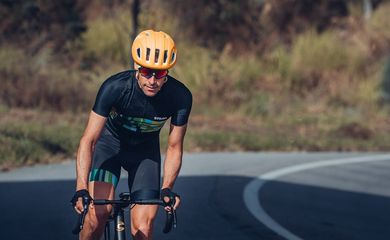Global exercise report highlights evolution of walking

The annual report on the practice of exercise in the world, released by Strava, a social network dedicated to the sport, pointed out walking outdoors as one of the activities that grew the most over the past year. The balance gathered data from more than 95 million users of the platform and identified twice as many walking records in the comparison between 2021 and 2020.

The increase draws attention for overcoming the impact of weather phenomena, especially in the United States, the main market for the application. The blizzards that hit Texas in February and the energy crisis reduced outdoor activities in the country's second most populous state by 57% over the period. During the North American summer, the heat wave witnessed in the state of Oregon decreased records by 23%.
The hiking statistic is only proportionally behind alternative winter activities such as cross-country and off-piste skiing, which increased 2.5 times over last year. According to the report, ski resort closures were impacted for much of 2021, which resulted in a 37% drop in alpine skiing and snowboarding registrations.
“With the restrictions necessary because of the covid-19 pandemic in place and the desire, perhaps stronger than ever, to take time out to exercise during the day, we've seen walking become more popular than ever in all of the age groups and all over the world”, points out an excerpt of the report.
In Brazil, Strava's third largest market, outdoor walking rose 1.6 times compared to 2020. The report pointed out that Brazilians walk, on average, three hours a week. The mark is the same as the Germans, less than the Spanish (3.7 hours), British (3.5 hours), Indians (3.3 hours) and French (3.2 hours), but higher than the Australians (2, 7 hours) and North American (2.5 hours).
“Outdoor walking has been growing globally in recent years and with very expressive results in Brazil, which is one of the markets that pulls this number. There are several hypotheses. One of them is to be an entry sport for others, with people wanting to start moving around and finding an easier and more relaxed sport to start on the walk”, analyzed the manager of Strava in Brazil, Rosana Fortes, to Agência Brasil .
“We've also seen walking as a way to commute. Many people who moved closer to work and left their car at home or decided to [walk and] not take public transport, certainly as a result of the pandemic,” added Rosana.
Also according to the report, the older the people, the higher the percentage of walks. Highlight for the age group over 70 years, where 56% of users of the social network registered outdoor activities. In Brazil, the statistic was 52%. The lowest rate in the country was observed among people aged 18 to 29 years (38%, slightly higher than the global balance of the cut, which was 35%).
“Strava started more than 10 years ago, very focused on cycling and the bicycle audience has always been older, whether due to knowledge of the application or purchasing power. Perhaps this is the hypothesis that we have a large number of older people, proportionally [recording walks]. As a result, people who already use the app use it [also] for walks," said the manager of the social network.
Here, the publications on hiking only grew less than those on swimming (1.8 times), yoga (1.9 times) and functional training (2.2 times). For Rosana, statistics also have to do with the pandemic. She highlights the example of yoga, a modality whose activity record has also doubled globally, compared to 2020.
“The increase in the number of athletes recording yoga training is a movement that we have seen in all markets and very much related to the fact that it is indoor, practiced alone, perhaps with the help of videos or tutorials. Obviously, it is a sport that talks about mental health, at a time when everyone looked to the sport as an escape valve from the impacts of the pandemic”, he concluded.
Text translated using artificial intelligence.






